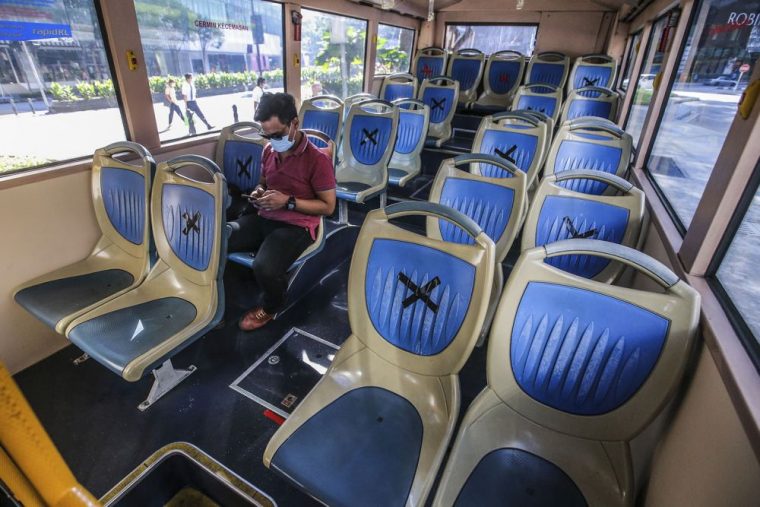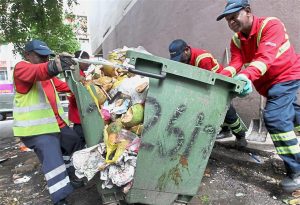
We’re pretty sure you’ve read somewhere about the rate of unemployment going around you but do you know the total number precisely?
In March 2020 alone, an additional 89,200 Malaysians were found to be unemployed across the country, adding to a total of 610,500 able-bodied adults not being employed.
610,500 persons not working and not earning anything.
That number alone equals the total population of Petaling Jaya, Subang Jaya and Shah Alam combined.
For the record, the Department of Statistics Malaysia (DOSM) reported that 521,300 persons were unemployed last year with a 17.1% increase this year so if you’re reading this and are still getting paid for the work you’re doing from home – based on the numbers shown, consider yourself lucky.
For those who are stuck in a rut, let off for various reasons or simply couldn’t land a job, the glass is literally half full because 2020 has another half for you to get back up on your feet, score a job and sort your financial distress.
But first, let’s be clear on where you stand.
Defining Your Problems
DOSM found out that most Malaysians can’t survive more than two months with their savings. 51% to be exact.
And that is IF they have savings.
A big chunk of this group has outstanding credit card debt while the rest are suffering from reduced household income, getting pay cuts and also stuck with only one source of income which is now non-existent.
It was also discovered that many in this group are not reducing their EPF contribution (which was made available earlier this year) and also not dipping their hands into the i-Lestari access, with both facilities made available solely to cushion the economic impact and put cash in your hand.
Riddled with other financial commitments like automobile and home mortgages, the options are not looking good, realistically. While many feel like the PRIHATIN stimulus package is not a blanket aid for the everyday Malaysian, defining your situations positively sets you on the right track to get on your feet and do something. So apart from the BPN (or BSH), these are the options you should look out for:
The Options Laid Bare

a) Employment Insurance System (EIS)
The EIS is basically a backup plan should you be unemployed. It’s really that simple. If you’re wondering when did you sign up for such coverage, chances are you already did.
Implemented in 2018, the EIS is a compulsory government scheme to help private sector employees automatically and both employers and employees contributing 0.2% each, every month.
It aids you with FOUR very helpful aspects – Job Search Allowance (JSA), Early Re-employment Allowance (ERA), Reduced Income Allowance (RIA) and Free Training plus Job Search Assistance.
JSA helps you financially with a minimum of 3 months and maximum of 6 months of monthly allowance. Find out the rate here.
So you got a job. ERA then will help start you off, financially. While not as big as JSA, this next scheme will grant you 25% worth of allowance you’re entitled to, paid in lump-sum.
IF you have multiple sources of income, however, RIA was made just for this as it was constructed to financially aid those with more than one source of income and lost at least one but not all of them.
Apart from the above, EIS also provides paid fee for training programmes and also financial incentives to encourage YOUR attendance to such programmes. To apply, read the finer details here.
b) Revising Your Financial Commitment
It is first and foremost advisable to take the MORATORIUM for your loans, even if you have the savings to cover for a 6-month stretch. Remember that the volatile economy is not just confined within our borders, it’s a global scale. Your savings will never last you that long and the extra cash has more benefits to expand than nothing at all.
Although this might sound like low-hanging fruit for easy pickings, reviewing your HOUSEHOLD BUDGET seems to be the most practical way in this sense.
You may notice by now that certain expenditures got lesser while the rest increase, this is the right time to sit down to balance your books. Like it or not, the new norm calls for a less (or non-existent) weekend spending spree, less daily cost (petrol, toll) and less entertainment or travel budget. This in fact turns a clear tide on your missing income.
The only thing you need to watch out for is your stay-at-home spending like groceries, online shopping and of course, internet and electricity bills.
FIXED MONTHLY PAYMENTS – can’t live with them, can’t live without them. Provided that you’re renting, do know that the owner of your unit is eligible for the 6-month moratorium. Negotiate your way so both ends come up happy parties.
The same goes for schools, pre-schools, nurseries and kindergartens. Since the shutdown on 18 March, the rational sense would be to reduce monthly fees. If you have children, chances are you’re already enjoying this bit for the extra cash at hand.
Bouncing Back Up

Despite whatever the politicians, media or economists said about the gloomy economy, have you noticed that certain sectors not only thrives but tripled their profit during the MCO, and most probably a couple of years after.
If you’re lost without a job, there’s only so much saving you can do. Perhaps it’s time to take a look at what you’re made of and try your hands at these industry sectors that seem to be flourishing against the dark cloud:
Sectors like Rubber Manufacturing (demand for medical protection), Digital Economy (online shopping), Agricultural (self-sufficient producer), Pharmaceuticals (no-brainer), FMCG and Consumer Staples (everyday food items) have been embracing the situation with much to cheer.
The clear cut sector would, of course, be e-hailing, logistics or food delivery. You may be an ace at your old game but this is a new era. Maybe it’s time to take a second look at working for Grab, Foodpanda, Nestle or even Durex!
So what do you do with all this extra cash?
Devote your dime, in other words – INVEST!
What good are all these extra cash if not for bankrolling it back in. All those cuts from the moratorium to the school fees, the extra cash from EIS, EPF and even BPN will only be useful if you know how to capitalise on them.
If you’re aware, banks right now are offering quite a number of good long and short term fixed deposit and savings packages too many to mention. Also if you have signed up for the i-Lestari program, by next week you should already have an extra RM1,000 – a good amount to start small and roll yourself back in the game. Read how to make it worth HERE.








